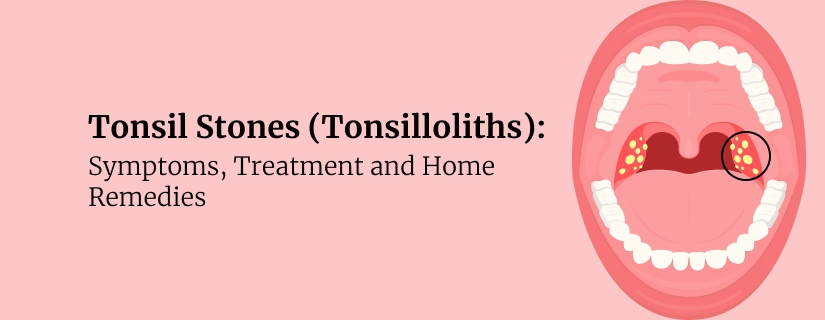-
Doctors
-
Specialities & Treatments
Centre of Excellence
Specialties
Treatments and Procedures
Hospitals & Directions HyderabadCARE Hospitals, Banjara Hills CARE Outpatient Centre, Banjara Hills CARE Hospitals, HITEC City CARE Hospitals, Nampally Gurunanak CARE Hospitals, Musheerabad CARE Hospitals Outpatient Centre, HITEC City CARE Hospitals, Malakpet
HyderabadCARE Hospitals, Banjara Hills CARE Outpatient Centre, Banjara Hills CARE Hospitals, HITEC City CARE Hospitals, Nampally Gurunanak CARE Hospitals, Musheerabad CARE Hospitals Outpatient Centre, HITEC City CARE Hospitals, Malakpet Raipur
Raipur
 Bhubaneswar
Bhubaneswar Visakhapatnam
Visakhapatnam
 Nagpur
Nagpur
 Indore
Indore
 Chh. Sambhajinagar
Chh. SambhajinagarClinics & Medical Centers
Book an AppointmentContact Us
Online Lab Reports
Book an Appointment
Consult Super-Specialist Doctors at CARE Hospitals
How To Cure Tonsillitis?
Updated on 20 October 2023

Table of Content
Tonsils are two oval-shaped, small, gland-like structures located at the back of the throat that play a crucial role in our immune system. Although widely known for causing discomfort and infections, tonsils have a significant purpose in protecting us from harmful bacteria and viruses.
Symptoms of Tonsillitis
The most prominent symptom of tonsillitis is swelling or enlargement of the tonsils. There can also be other physical symptoms which may indicate the occurrence of tonsillitis. These symptoms may include the following:
- Pain in the throat
- Soreness in the throat
- Headache and fever
- Muffled voice
- Difficulty in swallowing
- Loss of appetite
- Swelling of the lymph nodes in the neck region
- Yellow coating on the tonsils
- Redness of the tonsils
- Pain in the ear
- Bad breath
Surgical treatment for Tonsills
There have been several recent advances in tonsillectomy procedures aimed at improving patient outcomes and reducing complications.
- Minimal access techniques: Traditional tonsillectomy involves removing the tonsils through the mouth using a scalpel. Recent advances have led to the development of less invasive techniques, such as Coblation, where radiofrequency energy is used to remove the tonsils. This results in less tissue damage, decreased pain, and faster recovery compared to traditional techniques.
- Laser tonsillectomy
- Microdebrider-assisted tonsillectomy
- Robotics-assisted tonsillectomy
- Transoral robotic surgery (TORS)
- Improved pain management
These recent advances in tonsillectomy techniques have led to significant improvements in patient outcomes, including reduced pain, faster recovery, and decreased risk of complications. However, it is important to note that not all advanced techniques are appropriate for every patient, and the choice of technique should be tailored to individual patient needs and the surgeon's expertise.
FAQs
1: What are tonsils, and what role do they play in our body's defense system?
Tonsils are two oval-shaped glands positioned on either side of the back of the throat. They are part of the lymphatic system, acting as filters to trap bacteria, viruses, and other harmful microorganisms that we encounter when breathing or eating.
2: What is the primary purpose of tonsils?
Tonsils are designed to prevent germs from entering the body through the mouth and nose. By producing antibodies and white blood cells, tonsils help fight off infections. In essence, they act as the body's first line of defense in preventing the spread of germs to other parts of the body.
3: Why do tonsils sometimes become infected or swollen?
Tonsils can become infected or swollen due to various reasons, including viral or bacterial infections. Common symptoms of tonsil infection include sore throat, difficulty swallowing, swollen glands, and fever. Recurrent or persistent infections may require medical intervention, such as antibiotics or, in severe cases, removal.
4: When is it necessary to consider tonsillectomy (tonsil removal)?
Tonsillectomy is usually recommended when an individual experiences chronic or recurring tonsillitis (inflammation of the tonsils) or if the tonsils become enlarged and obstruct breathing or swallowing. Additionally, individuals with sleep apnea or frequent strep throat infections may require a tonsillectomy if other treatments have proved ineffective.
5: Can tonsils grow back after removal?
Though rare, there have been instances where tonsils have regrown partially or completely after a tonsillectomy. However, this occurrence is infrequent and often only happens if a small piece of tonsil tissue remains after the procedure.
6: Can tonsil stones cause any health problems?
Tonsil stones, also known as tonsilloliths, are small, white or yellowish deposits that form in the tonsil crevices. While they are generally harmless, they can cause bad breath, discomfort, or a sensation of something stuck in the throat for some individuals. Maintaining good oral hygiene and gargling with saltwater can help prevent their formation.
To Book an Appointment, call:
ENQUIRY FORM
SELECT CATEGORIES
-
Neurosciences (16)
-
Neurology (37)
-
Neurosurgery (14)
-
Orthopaedics (48)
-
Oncology (33)
-
Obstetrics and gynecology (51)
-
Pulmonology (23)
-
Urology (20)
-
Nephrology (13)
-
Psychiatry (7)
-
Dietetics and Nutrition (111)
-
General Medicine (63)
-
Cardiac Sciences (30)
-
Vascular & Endovascular Surgery and Interventional Radiology (10)
-
Gastroenterology (46)
-
Endocrinology (23)
-
Plastic Surgery (10)
-
Critical Care Medicine (5)
-
COVID-19 (16)
-
Dermatology (16)
-
Emergency Care (1)
-
Ophthalmology (4)
-
Pediatrics (14)
-
Laparoscopic and Bariatric Surgery (8)
-
ENT (15)
-
Kidney Transplant (1)
-
Liver Transplantation and Hepatobiliary Surgery (5)
-
General Surgery (3)
-
Internal Medicine (5)
-
Medicine Information
All you need to know about Sinusitis
Dry Mouth: Symptoms, Causes, Diagnosis and Treatment
YOU MAY ALSO LIKE
RECENT BLOGS
-

Direct Anterior Approach in Total Hip Replacement: Advantages and Challenges
10 April 2025
Read More
-

Zinc Deficiency: Signs and Symptoms, Causes, Treatment
9 April 2025
Read More
-

Chest Pain When Coughing: Causes, Treatment and Home Remedies
9 April 2025
Read More
-

12 Health Benefits of Eating Mushrooms
8 April 2025
Read More
-

7 Health Benefits of Blood Donation You Should Know About
8 April 2025
Read More
-

Implantation Bleeding Vs Periods: Know the Difference
28 February 2025
Read More
-

Bloating During Ovulation: Symptoms, Causes and Remedies
28 February 2025
Read More
-

Itching During Dengue: Causes, Treatment and Home Remedies
18 February 2025
Read More
Have a Question?
If you cannot find answers to your queries, please fill out the enquiry form or call the number below. We will contact you shortly.














